A review of molybdenum disulfide (MoS2) based photodetectors: from ultra-broadband, self-powered to flexible devices
- PMID: 35516069
- PMCID: PMC9056353
- DOI: 10.1039/d0ra03183f
A review of molybdenum disulfide (MoS2) based photodetectors: from ultra-broadband, self-powered to flexible devices
Abstract
Two-dimensional transition metal dichalcogenides (2D TMDs) have attracted much attention in the field of optoelectronics due to their tunable bandgaps, strong interaction with light and tremendous capability for developing diverse van der Waals heterostructures (vdWHs) with other materials. Molybdenum disulfide (MoS2) atomic layers which exhibit high carrier mobility and optical transparency are very suitable for developing ultra-broadband photodetectors to be used from surveillance and healthcare to optical communication. This review provides a brief introduction to TMD-based photodetectors, exclusively focused on MoS2-based photodetectors. The current research advances show that the photoresponse of atomic layered MoS2 can be significantly improved by boosting its charge carrier mobility and incident light absorption via forming MoS2 based plasmonic nanostructures, halide perovskites-MoS2 heterostructures, 2D-0D MoS2/quantum dots (QDs) and 2D-2D MoS2 hybrid vdWHs, chemical doping, and surface functionalization of MoS2 atomic layers. By utilizing these different integration strategies, MoS2 hybrid heterostructure-based photodetectors exhibited remarkably high photoresponsivity raging from mA W-1 up to 1010 A W-1, detectivity from 107 to 1015 Jones and a photoresponse time from seconds (s) to nanoseconds (10-9 s), varying by several orders of magnitude from deep-ultraviolet (DUV) to the long-wavelength infrared (LWIR) region. The flexible photodetectors developed from MoS2-based hybrid heterostructures with graphene, carbon nanotubes (CNTs), TMDs, and ZnO are also discussed. In addition, strain-induced and self-powered MoS2 based photodetectors have also been summarized. The factors affecting the figure of merit of a very wide range of MoS2-based photodetectors have been analyzed in terms of their photoresponsivity, detectivity, response speed, and quantum efficiency along with their measurement wavelengths and incident laser power densities. Conclusions and the future direction are also outlined on the development of MoS2 and other 2D TMD-based photodetectors.
This journal is © The Royal Society of Chemistry.
Conflict of interest statement
There are no conflicts to declare.
Figures

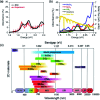


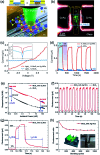




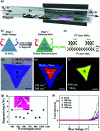


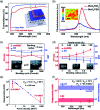

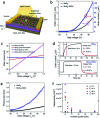








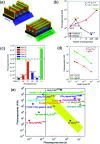



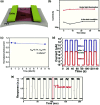


Similar articles
-
MoS2 Based Photodetectors: A Review.Sensors (Basel). 2021 Apr 14;21(8):2758. doi: 10.3390/s21082758. Sensors (Basel). 2021. PMID: 33919731 Free PMC article. Review.
-
Photophysical Dynamics in Semiconducting Graphene Quantum Dots Integrated with 2D MoS2 for Optical Enhancement in the Near UV.ACS Appl Mater Interfaces. 2021 Feb 3;13(4):5379-5389. doi: 10.1021/acsami.0c18615. Epub 2021 Jan 20. ACS Appl Mater Interfaces. 2021. PMID: 33471523
-
All-Inorganic Perovskite Quantum Dot-Monolayer MoS2 Mixed-Dimensional van der Waals Heterostructure for Ultrasensitive Photodetector.Adv Sci (Weinh). 2018 Sep 21;5(12):1801219. doi: 10.1002/advs.201801219. eCollection 2018 Dec. Adv Sci (Weinh). 2018. PMID: 30581713 Free PMC article.
-
High-Performance Broadband Photodetector Based on Monolayer MoS2 Hybridized with Environment-Friendly CuInSe2 Quantum Dots.ACS Appl Mater Interfaces. 2020 Dec 9;12(49):54927-54935. doi: 10.1021/acsami.0c14161. Epub 2020 Nov 25. ACS Appl Mater Interfaces. 2020. PMID: 33238704
-
Flexible Molybdenum Disulfide (MoS2) Atomic Layers for Wearable Electronics and Optoelectronics.ACS Appl Mater Interfaces. 2019 Mar 27;11(12):11061-11105. doi: 10.1021/acsami.8b19859. Epub 2019 Mar 18. ACS Appl Mater Interfaces. 2019. PMID: 30830744 Review.
Cited by
-
Synthesis of MoS2-based nanostructures and their applications in rechargeable ion batteries, catalysts and gas sensors: a review.RSC Adv. 2022 Jul 6;12(30):19512-19527. doi: 10.1039/d2ra01532c. eCollection 2022 Jun 29. RSC Adv. 2022. PMID: 35865576 Free PMC article. Review.
-
Self-Powered Sb2Te3/MoS2 Heterojunction Broadband Photodetector on Flexible Substrate from Visible to Near Infrared.Nanomaterials (Basel). 2023 Jun 29;13(13):1973. doi: 10.3390/nano13131973. Nanomaterials (Basel). 2023. PMID: 37446489 Free PMC article.
-
Enhancement of Photodetective Properties on Multilayered MoS2 Thin Film Transistors via Self-Assembled Poly-L-Lysine Treatment and Their Potential Application in Optical Sensors.Nanomaterials (Basel). 2021 Jun 17;11(6):1586. doi: 10.3390/nano11061586. Nanomaterials (Basel). 2021. PMID: 34204218 Free PMC article.
-
Strain-Enhanced Large-Area Monolayer MoS2 Photodetectors.ACS Appl Mater Interfaces. 2024 Mar 27;16(12):15596-15604. doi: 10.1021/acsami.4c00458. Epub 2024 Mar 18. ACS Appl Mater Interfaces. 2024. PMID: 38500411 Free PMC article.
-
A wafer-scale synthesis of monolayer MoS2 and their field-effect transistors toward practical applications.Nanoscale Adv. 2021 Feb 23;3(8):2117-2138. doi: 10.1039/d0na01043j. eCollection 2021 Apr 20. Nanoscale Adv. 2021. PMID: 36133770 Free PMC article. Review.
References
-
- RP Photonics Encyclopedia (formerly Encyclopedia of Laser Physics and Technology), RP Photonics Consulting GmbH, Bad Dürrheim, Germany, 2013, https://www.rp-photonics.com
-
- Handbook of Advanced Electronic and Photonic Materials and Devices, ed. H. S. Nalwa, Academic Press, San Diego, 2001, 10-volume set
- Handbook of Organic Electronics and Photonics, ed. H. S. Nalwa, American Scientific Publishers, Los Angeles, 2008, 3-volume set
- Handbook of Luminescence, Display Materials and Devices, ed. H. S. Nalwa and L. S. Rohwer, American Scientific Publishers, Los Angeles, 2003, 3-volume set
- Encyclopedia of Nanoscience and Nanotechnology, ed. H. S. Nalwa, American Scientific Publishers, Los Angeles, 2004, 10-volume set
-
- Zhang Z. Huang H. Yang X. Zang L. Tailoring Electronic Properties of Graphene by π–π Stacking with Aromatic Molecules. J. Phys. Chem. Lett. 2011;2:2897–2905. doi: 10.1021/jz201273r. - DOI
-
- Wang D. Wang L. Dong X. Shi Z. Jin J. Chemically Tailoring Graphene Oxides into Fluorescent Nanosheets for Fe3+ ion Detection. Carbon. 2012;50:2147–2154. doi: 10.1016/j.carbon.2012.01.021. - DOI
Publication types
LinkOut - more resources
Full Text Sources

